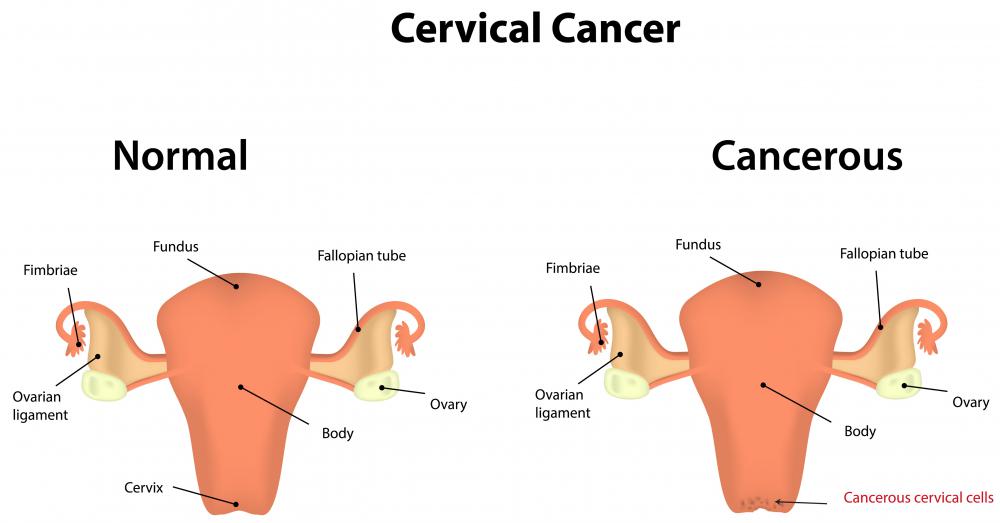At TheHealthBoard, we're committed to delivering accurate, trustworthy information. Our expert-authored content is rigorously fact-checked and sourced from credible authorities. Discover how we uphold the highest standards in providing you with reliable knowledge.
What Are the Pros and Cons of Brachytherapy for Cervical Cancer?
Brachytherapy for cervical cancer is an effective and safe alternative to surgical removal of the cervix and uterus. It also can be used as an alternative to external radiation, which might destroy healthy tissue as well as cancerous tissue. There are, however, a number of potential side effects to brachytherapy.
Internal radiation, or brachytherapy, involves a patient’s cancerous organ or tissue being treated with a localized dose of radiation. The radiation source is sealed in a tube and placed near or within the organ or tissue. With brachytherapy for cervical cancer, the tube is inserted into the uterine cavity and vagina. Brachytherapy can be used in more than one way. It is effective both as a standalone therapy — a monotherapy — or in combination with another treatment, such as external beam radiotherapy, chemotherapy or surgery.

As a monotherapy, brachytherapy for cervical cancer might be perceived as preferable to both surgery and external radiation, because the other treatments carry significant risks. In the case of external radiation, its destruction of healthy tissue is a problem because the body cannot repair the tissue and instead replaces it with scar tissue, which is less functional than the original tissue. The removal of the cervix and uterus during surgery — a radical hysterectomy — can lead to temporary inflammation, making it difficult for the patient to empty her bladder.

Brachytherapy for cervical cancer does have flaws and complications of its own, however. This treatment can cause stenosis, or vaginal scarring. Such scarring might make sexual intercourse painful or might gynecological examinations difficult. Lubricants can be used to counter the vaginal dryness, making penetrative sex more comfortable.
The term "brachytherapy" is a derived from the ancient Greek brachios, which means "short," and therapeia, which means "healing." The word "brachytherapy" therefore translates as "short-distance healing." This treatment is so named because it is applied near the organ or tissue.

Brachytherapy was first used in 1901, when French physicist Pierre Curie proposed to the Parisian hospital St. Louis that a tumor be treated via the insertion of a small radium tube. Radium is a chemical element that emits radiation. Curie and his wife, Marie, first extracted radium from uranium in 1898.
In addition to treating cervical cancer, brachytherapy is also used to treat other cancers, such as uterus, prostate and breast cancer. Esophageal, head and neck, lung and skin cancers also can be treated with brachytherapy. Apart from cancer, this treatment is additionally used to combat coronary artery disease.
AS FEATURED ON:
AS FEATURED ON:















Discuss this Article
Post your comments